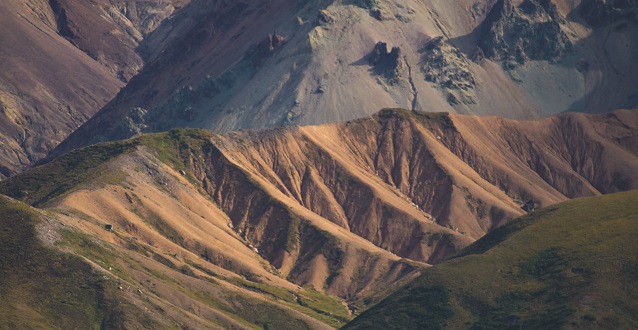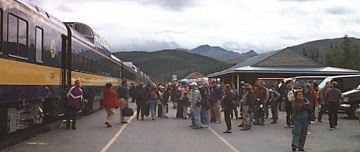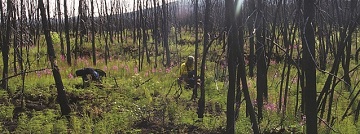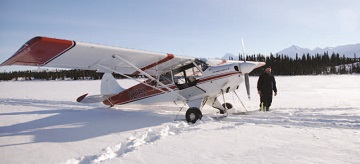
NPS photo
“We are the stewards of lands and landscapes,” declared the National Park Service (NPS) Director during a speech in 1999 announcing a new science-based approach to park management—the Natural Resource Challenge. This Challenge ushered in several new NPS programs over the last decade— applying science-based management to help assess the status of natural resources in national parks, and to assure a healthy condition for them—including the Natural Resource Condition Assessment (NRCA) Program.
What are current conditions for park resources?
The NRCA Program mandates the development of park-specific assessments that are “a spatially-explicit multi-disciplinary synthesis of existing scientific data and knowledge, from multiple sources, to help answer the question: what are current conditions for important park resources?”
Each park’s assessment is a snapshot-in-time evaluation of selected park natural resources. The assessment reports the overall condition of these resources by answering questions such as: What attributes and indicators can be used to assess whether resources are in a healthy condition? What factors exert influence on resource condition? Are there any critical data gaps?
Each NRCA will use a hierarchical study framework for organizing the park’s ecological characteristics in major categories (e.g., extent and pattern of landscapes, chemical and physical characteristics, biological components, and goods and services) and at multiple ecological levels (e.g., species up to ecosystems). Within each of the categories, once indicators have been selected to assess natural resource condition, and a reference condition has been identified, the NRCA synthesizes existing data to report the current condition for the indicators— for an appropriate spatial area (e.g., parkwide, by ecosystem types, by zones).
Products and outcomes
The core product of these park assessments are an evaluation of a broad set of indicators against an ecological reference condition (condition summaries by reporting area), along with a list of some of the factors influencing those conditions (threats and stressors). Each park’s NRCA report conforms to a NRCA standard outline. Report appendices present results of analyses and spatially-arranged information, such as maps and data layers synthesized in a Geographic Information System (GIS).
Park managers can use their park’s condition assessment to develop strategies and goals toward achieving or maintaining the desired resource conditions set by the park’s general management plan, to conduct planning to set target conditions for important resources (if not already set), and to engage in resource partnerships or education efforts toward science-based stewardship of natural resources.
Funding NRCAs
The NPS agreed to fund the NRCA Program, beginning with a few pilot parks in 2006 and adding more parks each year. Beginning in 2008, assessments for 30-35 parks are being funded each year, with the goal of completing assessments for the 270 parks with substantial natural resources by 2014. Denali National Park and Preserve received funding in 2009, for completion of its assessment in 2011.
Denali’s Natural Resource Condition Assessment
Denali staff are working through a cooperative agreement with St. Mary’s University of Minnesota to conduct the park’s NRCA (see Project Milestones for timeline).
Because the task of identifying key indicators for Denali’s natural resources was completed through the development of the park’s Resource Stewardship Strategy, Denali’s NRCA product will include some in-depth assessments for specific areas of management and ecological concern (see project list at left). Denali staff developed additional assessment projects for spatial analysis if time permits (e.g., timing of snow on-snow off, salmon distribution in relation to winter-open waters, bear-human interaction data).
Rising to the Natural Resource Challenge, Denali’s NRCA will be an essential tool for science-based management and for careful stewardship of the park’s natural resources for generations to come.

NPS photo
Projects Included in Denali's Natural Resource Condition Assessment
These analyses will enhance standardized reporting on a broad set of indicators.
(1) Human Influence
Assemble data layers to map cumulative human influence and types of usage, e.g. airstrips, roads, climbing routes, utilities, cabins, social trails.
(2) Subsistence
Map known locales where subsistence activities occur (e.g., firewood harvesting, trapping, hunting, fishing, and plant and berry picking).

NPS photo
(3) Fire
Generate basic fire statistics. Analyze burn severity datasets in relation to soils-vegetation database.
(4) Habitat
Overlay population distributions (e.g., caribou, moose, sheep) with soils map to summarize habitat useage, including mineral licks.
(5) Water Quality
Spatially arrange water sample locations for six known water quality projects in Kantishna; compare methods and assess consistency of data across studies.

NPS photo
(6) Impacts of Overflights on Soundscapes
Construct map from flight tracking logs to identify activity corridors and flight elevations, and to assess impacts to ground-level soundscapes.
(7) Other Miscellaneous Projects
- Permafrost—show known locations of drilled cores with temperature
- Geology—assemble map of faults and seismic activity
- Salmon—assemble anecdotal data for salmon surveys
Denali’s Natural Resource Condition Assessment Project Milestones:
Agreement with St. Mary’s University 7/2009
Project Scoping and Study Plan Refinement 10/2009
Detailed Scope of Work 12/2009
Data Gathering and Preparation 12/2009 to 5/2010
Project Analyses and Draft Findings 5/2010 to 7/2010
Mid-project Workshop 7/2010
Final Analyses and GIS Products 7/2010 to 10/2010
Draft Report and GIS Maps 1/2011
Delivery of Final Products 3/2011
Last updated: July 28, 2016
